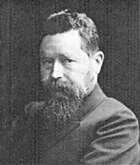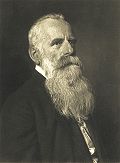Bioinformatics Wiki
Contents
| |||||||||||||||||||||||||||||||||||||||||||||||||||||||||||||
All 423 seats in the Weimar National Assembly 212 seats needed for a majority | |||||||||||||||||||||||||||||||||||||||||||||||||||||||||||||
|---|---|---|---|---|---|---|---|---|---|---|---|---|---|---|---|---|---|---|---|---|---|---|---|---|---|---|---|---|---|---|---|---|---|---|---|---|---|---|---|---|---|---|---|---|---|---|---|---|---|---|---|---|---|---|---|---|---|---|---|---|---|
| Registered | 36,779,888 ( | ||||||||||||||||||||||||||||||||||||||||||||||||||||||||||||
| Turnout | 83.0% ( | ||||||||||||||||||||||||||||||||||||||||||||||||||||||||||||
| |||||||||||||||||||||||||||||||||||||||||||||||||||||||||||||
| |||||||||||||||||||||||||||||||||||||||||||||||||||||||||||||
| This article is part of a series on the |
| Politics of Germany |
|---|
 |
Federal elections were held in Germany on 19 January 1919,[1] although members of the standing army in the east did not vote until 2 February. The elections were the first of the new Weimar Republic, which had been established after World War I and the Revolution of 1918–19, and the first with women's suffrage. The previous constituencies, which heavily overrepresented rural areas, were scrapped, and the elections held using a form of proportional representation.[2] The voting age was also lowered from 25 to 20.[3] Austrian citizens living in Germany were allowed to vote, with German citizens living in Austria being allowed to vote in the February 1919 Constitutional Assembly elections.[4]
From its inaugural session on 6 February, the National Assembly (Nationalversammlung) functioned as both a constituent assembly and unicameral legislature. The supporting parties of the "Weimar Coalition" (SPD, Zentrum and DDP) together won 76.2% of the votes cast; on 13 February, provisional president Friedrich Ebert appointed Philipp Scheidemann, of the SPD, as Minister-President. The office was later renamed Chancellor when the Weimar Constitution came into force in August 1919. The Scheidemann cabinet replaced the revolutionary Rat der Volksbeauftragten (Council of the People's Deputies). Voter turnout was 83.0%.[5]
Electoral system
The 423 seats of the National Constituent Assembly were set to be elected in 38 multi-member constituencies of between six and 17 seats using party-list proportional representation. Two seats were reserved for representatives of standing troops in the east of the country. Apparentment was also in effect, allowing parties to form coalitions in constituencies, using one common list (although a party could only win seats if it put forward candidates in those constituencies). The voting age was set at 20.
Campaign
The Social Democratic Party (SPD) supported Germany's involvement in World War I. Anti-war members of the party formed the Independent Social Democratic Party (USPD). The Council of the People's Deputies was initially made up of members of both parties, but the USPD left following the usage of the Freikorps to suppress the Spartacist uprising.[6]
The Communist Party boycotted the election.[7]
Results
The SPD saw their share of the vote increased compared to the previous election despite the presence of the USPD. The SPD formed a coalition with the Catholic Centre Party and German Democratic Party.[8]
One constituency established by the Electoral Regulations, Elsass–Lothringen, was unable to hold its elections due to having been annexed by France in the aftermath of World War I, and in another, Posen, amidst the Greater Poland uprising, Poles boycotted the vote.
 | ||||
|---|---|---|---|---|
| Party | Votes | % | Seats | |
| Social Democratic Party | 11,509,048 | 37.86 | 163 | |
| Christian People's Party[a] | 5,980,216 | 19.67 | 91 | |
| German Democratic Party[b] | 5,641,825 | 18.56 | 75 | |
| German National People's Party[c] | 3,121,479 | 10.27 | 44 | |
| Independent Social Democratic Party | 2,317,290 | 7.62 | 22 | |
| German People's Party | 1,345,638 | 4.43 | 19 | |
| Bavarian Peasants' League | 275,125 | 0.91 | 4 | |
| German-Hanoverian Party | 77,226 | 0.25 | 1 | |
| Schleswig-Holstein Farmers and Farmworkers Democracy | 57,913 | 0.19 | 1 | |
| Brunswick State Electoral Association | 56,858 | 0.19 | 1 | |
| Mecklenburg Village League | 10,891 | 0.04 | 0 | |
| German Peace Party | 3,503 | 0.01 | 0 | |
| German Officials', Employees' and Middle Class Party | 1,438 | 0.00 | 0 | |
| Christian Social Party | 664 | 0.00 | 0 | |
| Middle Class Party | 640 | 0.00 | 0 | |
| German Social Aristocracy | 279 | 0.00 | 0 | |
| Democratic Middle Class Party | 208 | 0.00 | 0 | |
| Social Reform Party | 45 | 0.00 | 0 | |
| Total | 30,400,286 | 100.00 | 421 | |
| Valid votes | 30,400,286 | 99.59 | ||
| Invalid/blank votes | 124,562 | 0.41 | ||
| Total votes | 30,524,848 | 100.00 | ||
| Registered voters/turnout | 36,766,500 | 83.02 | ||
| Source: Gonschior.de | ||||
- ^ The Christian People's Party total includes 270,771 votes and four seats from a common Centre Party–German-Hanoverian Party party list in constituency 16 (Hannover/Hildesheim/Lüneburg/Braunschweig).
- ^ The German Democratic Party total includes 142,103 votes and two seats from a common German Democratic Party–German People's Party list in constituency 21 (Coblenz/Trier)
- ^ The German National People's Party total includes 503,755 votes and seven seats from joint German National People's Party–German People's Party lists in constituencies 18 (Arnsberg), 22 (Düsseldorf West), and 36 (Thuringia).
Representatives of standing troops in the East
| Party | Votes | % | Seats | |
|---|---|---|---|---|
| Social Democratic Party | 7,804 | 60.04 | 2 | |
| Independent Social Democratic Party | 1,945 | 14.96 | 0 | |
| German Democratic Party | 1,681 | 12.93 | 0 | |
| Non-partisan lists | 1,389 | 10.69 | 0 | |
| German People's Party | 74 | 0.57 | 0 | |
| German National People's Party | 62 | 0.48 | 0 | |
| Christian People's Party | 43 | 0.33 | 0 | |
| Total | 12,998 | 100.00 | 2 | |
| Valid votes | 12,998 | 97.09 | ||
| Invalid/blank votes | 390 | 2.91 | ||
| Total votes | 13,388 | 100.00 | ||
| Source: Nohlen & Stöver, Gonschior.de | ||||
References
- ^ Dieter Nohlen & Philip Stöver (2010) Elections in Europe: A data handbook, p762 ISBN 978-3-8329-5609-7
- ^ Nohlen & Stöver, p747
- ^ Nohlen & Stöver, pp746–748
- ^ Austria votes today. – German Part of Former Dual Monarchy Chooses Its Constituent Assembly. Archived 7 March 2020 at the Wayback Machine, The New York Times, 16 February 1919 (PDF)
- ^ Nohlen & Stöver, p776
- ^ Childers 1983, p. 34.
- ^ Childers 1983, p. 35.
- ^ Childers 1983, p. 36.
Works cited
- Childers, Thomas (1983). The Nazi Voter: The Social Foundations of Fascism in Germany, 1919-1933. University of North Carolina Press. ISBN 0807815705.

























